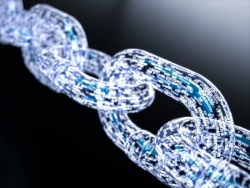
Digital assets are more than just bitcoin and they are having an incredible impact on how legitimate and illegitimate transactions are conducted. Breaking it down to a simple level there are three basic forms of digital assets:
- Digital currency is the electronic form of traditional currency. It is what is stored in a digital wallet, transmitted electronically and then turned into actual cash when withdrawn from a bank or ATM.
- Cryptocurrency is the encrypted form of digital currency that uses blockchain technology to move it around. Cryptocurrency does not require a financial institution to verify the transaction.
- Non-fungible tokens (NFTs) are a one-of-a-kind digital asset that represents a real-world item such as photos, music, videos and trading cards.
Unfortunately, as with any new technology, bad actors are finding ways to exploit these assets while the rest of the world is still trying to fully understand them.
Digital assets and fraud
Following the COVID-19 pandemic and the various federal programs aimed at supporting individuals and the economy as a whole, fraudulent claims and use of federal funds is at an all-time high. Much of this malfeasance was powered by the use of digital assets.
Criminals use phishing, hacking, and deep fakes to impersonate people in power, including CEOs to get people in finance to send payment to their accounts where they can immediately turn it into crypto to hide it. Similarly, ransomware hacks are demanding payment in crypto to help get payment faster and without the risks of real world interaction at a drop location or bank. However, the ability of crypto transactions to stay hidden is limited. Because they are tracked on a blockchain that is visible to everyone who has ever touched that asset, there is a digital breadcrumb that will eventually tie the bad actor back to the fraudulent funds. Blockchain expertise and analysis tools are quickly being employed across law enforcement agencies, closing the window of opportunity to move crypto from a hack into the pockets of the culprits. In fact, as agencies learn to use and analyze the data held in blockchains, they can start to get ahead of crime by shutting down scams before they start.
Regulating the future of digital assets
The Biden administration recently released the Comprehensive Framework for Responsible Development of Digital Assets. This guidance was welcomed by the blockchain industry as it showed a commitment to the whole-of-government approach needed to ensure the positive use of blockchain overcomes the potential pitfalls of the technology.
Digital assets have surpassed a $3 trillion market cap worldwide with 40 million U.S. adults investing in or using the technology. As the use of these assets continues to grow, stay on top of the latest technologies, trends and policies with resources from GovEvents and GovWhitePapers.
- CES 2023 (January 5-8, 2023; Las Vegas, NV) - The Consumer Technology Association brings together the world's business leaders and pioneering thinkers to address the industry's most relevant issues. A government track speaks directly to the impact consumer tech has on how the government works.
- The Blockchain Event (February 14-17, 2023; Ft. Lauderdale, FL) - This event helps decision-makers, technologists, and developers understand the value of blockchain to their businesses regardless of industry.
- Consensus 2023 (April 26-28, 2023; Austin, TX) - Bringing together all sides of crypto, blockchain, and Web3, Consensus serves as grounds for calibration, collaboration and resolution amid a profound technological transformation of blockchain technology.
- Hard Choices in a Ransomware Attack (white paper) - This report puts the reader in the victim's shoes at the moment of a ransomware assault. It outlines considerations a victim must make on their darkest day and in the weeks after. The paper also presents recommendations for government and industry on how to encourage planning and reasonable defensive measures.
- The Political Reality Inside Metaverse Cities (white paper) - Web 3.0 is part of an expanding decentralized version of the internet including technologies like nonfungible tokens (NFTs), cryptocurrencies, and the metaverse. This paper describes risk management techniques that can enhance decision making and planning across stakeholder groups.
Use GovEvents and GovWhitePapers to stay on top of digital assets trends.


